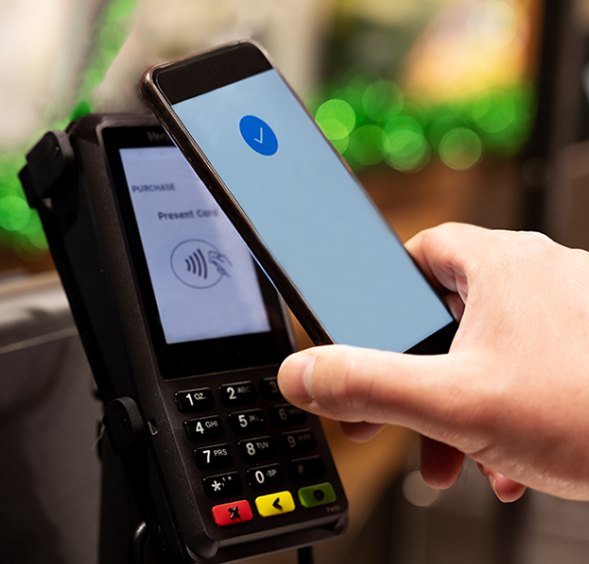Mobile Wallets: A New Way to Store Value

Mobile wallets are revolutionizing the way we make payments globally. Just a few decades ago, the idea of using a mobile phone for financial transactions seemed almost impossible. Now, sending money through apps and mobile devices has become the norm, especially in the Asia-Pacific (APAC) region, where mobile wallets have experienced tremendous growth.
Beyond banks and fintech companies offering digital wallet solutions, even non-traditional financial institutions are adopting this payment method as a new way for customers to store value and make payments. The adoption of mobile wallets as a mainstream method of payment is growing rapidly, especially in APAC, where major players like AliPay, WeChat Pay, and PayTM dominate.
The Shift Toward Mobile Wallets
The population of the APAC region surpassed 3.5 billion in 2020, representing nearly 50% of the world’s total. Mobile wallet usage in the region is projected to grow significantly, with estimates indicating 2.6 billion users by 2025 and transactions totaling $109 billion by 2027.
In Japan, mobile wallet adoption reached 70.6% in 2020, and by 2025, it’s expected that over 123 million individuals will be using mobile wallets. In China, AliPay has 1.2 billion users, and mobile wallet penetration reached 83.6% in 2020. However, adoption is still lower in other parts of the region, such as Malaysia, Singapore, Indonesia, and India, where mobile wallet usage is still under 50%.
Despite this, countries across APAC are experiencing a rapid shift toward mobile payments, with usage rates as high as 84% in China, Malaysia, and Thailand. The trend is continuing to grow, especially in markets where cashless payments are becoming more accepted and encouraged.
The Mobile Wallet Landscape in Malaysia and Indonesia
In Malaysia, several companies are competing for market share in the mobile wallet space. GrabPay, a leading player in the region, has expanded its services with a super-app feature and a strong merchant network. GrabPay has more than 35% market share in Southeast Asia and acquired Favepay to strengthen its position. Touch ‘n Go, initially focused on toll payments, has also partnered with GrabPay, enhancing its digital wallet capabilities.
In Indonesia, the competition is intense, with multiple players vying for dominance in the mobile payments market. ShopeePay, for example, has quickly gained traction by offering cashback, customer promotions, and user-friendly QR codes. As digital wallets gain acceptance, merchants are realizing the importance of offering multiple payment methods to meet customer preferences, driving further adoption.
The Impact of Mobile Wallets on Spending Behavior
Mobile wallets are not just convenient; they also influence spending patterns. Customers using mobile wallets tend to spend more frequently and make repeat purchases due to the ease of use and speed of transactions. The simplicity of mobile wallets helps boost customer loyalty, resulting in fewer abandoned purchases and increased sales for businesses.
For example, in Nigeria, 23% of the population uses mobile wallets, and many customers are willing to pay extra for the convenience that mobile wallets provide. As businesses adopt mobile wallets, they gain access to a loyal customer base, driving growth and profitability.
Regulating Mobile Wallets for Customer Protection
In markets with high mobile phone penetration and a significant unbanked population, mobile wallets have become a preferred option due to the slow adaptation of traditional financial institutions. Governments and central banks have recognized the potential of mobile wallets to drive financial inclusion and have started implementing regulations to safeguard consumers while fostering innovation.
For instance, the Philippines has introduced security measures like Know Your Customer (KYC) guidelines to protect users from fraudulent transactions. In response to consumer complaints about unauthorized activities, the Bankers Association of the Philippines has proposed new laws to protect mobile wallet users. Similarly, Indonesia’s central bank has set new standards for mobile payment providers, ensuring better governance and compliance.
The Role of Collaboration in Expanding Mobile Wallet Usage
The APAC region is experiencing rapid growth in mobile payments, driven by a rising middle class and increasing smartphone penetration. However, the mobile wallet market remains fragmented, with varying regulations across countries, making it challenging for cross-border brands to operate effectively.
For merchants, collaborating with a mobile payment provider that offers standardization and optimization can help streamline operations. However, for the industry as a whole to thrive, mobile wallet providers must adhere to regulations that ensure safety, transparency, and interoperability. By fostering collaboration between banks, fintech companies, and governments, the region can create a more seamless mobile wallet ecosystem.
Looking Ahead: The Future of Mobile Wallets
The future of mobile wallets is bright, with more fintech companies and non-traditional institutions entering the space. This increased competition is beneficial for consumers, as it encourages innovation, lowers costs, and provides more options.
For banks, the rise of mobile wallets presents both a challenge and an opportunity. Traditional banks that fail to adapt to the growing trend of digital payments risk losing customers to more agile fintech companies. To stay relevant, banks must embrace mobile wallet solutions and integrate them into their offerings, ensuring they can meet the evolving needs of modern consumers.


 English
English 












































































































































































































































































































































































